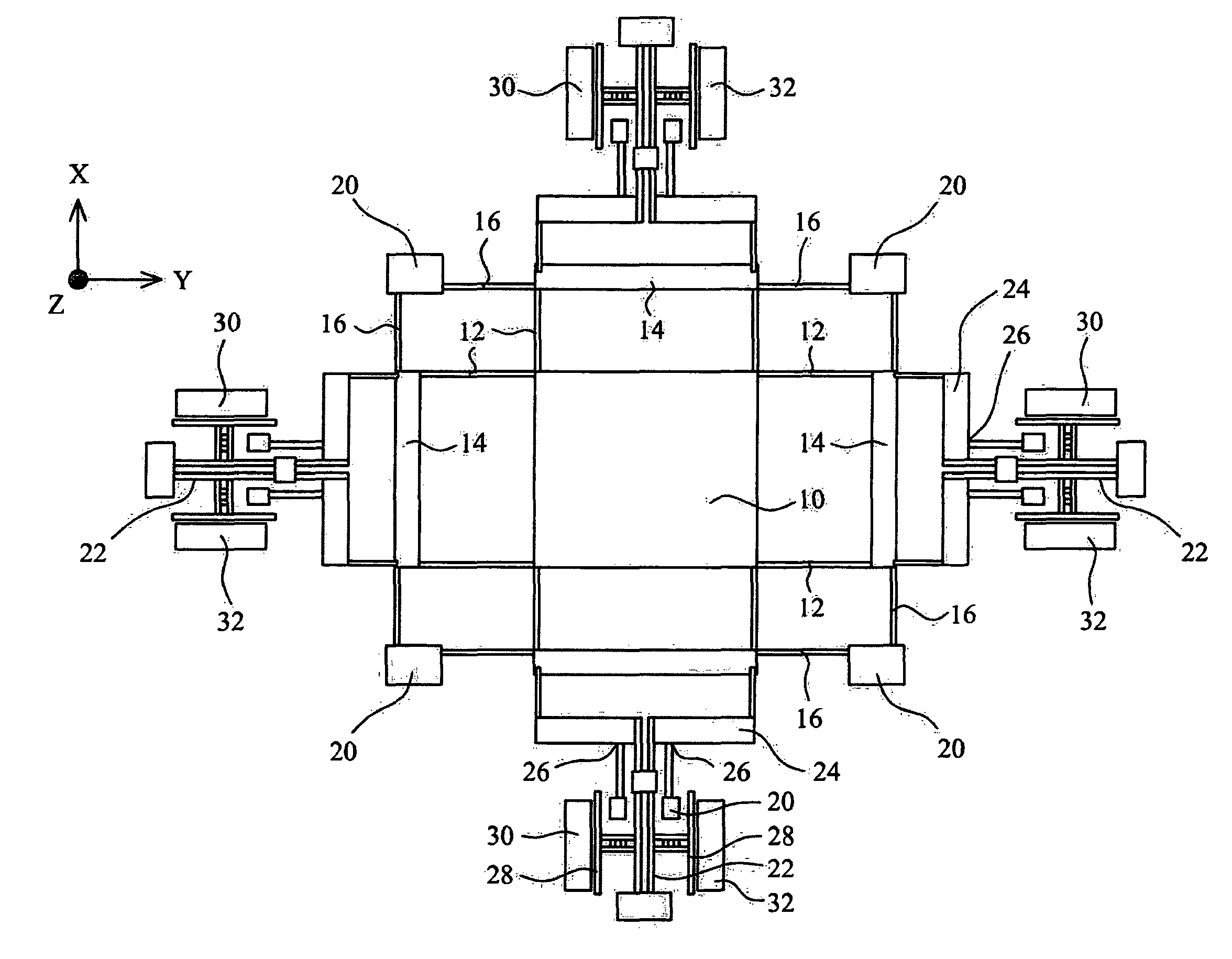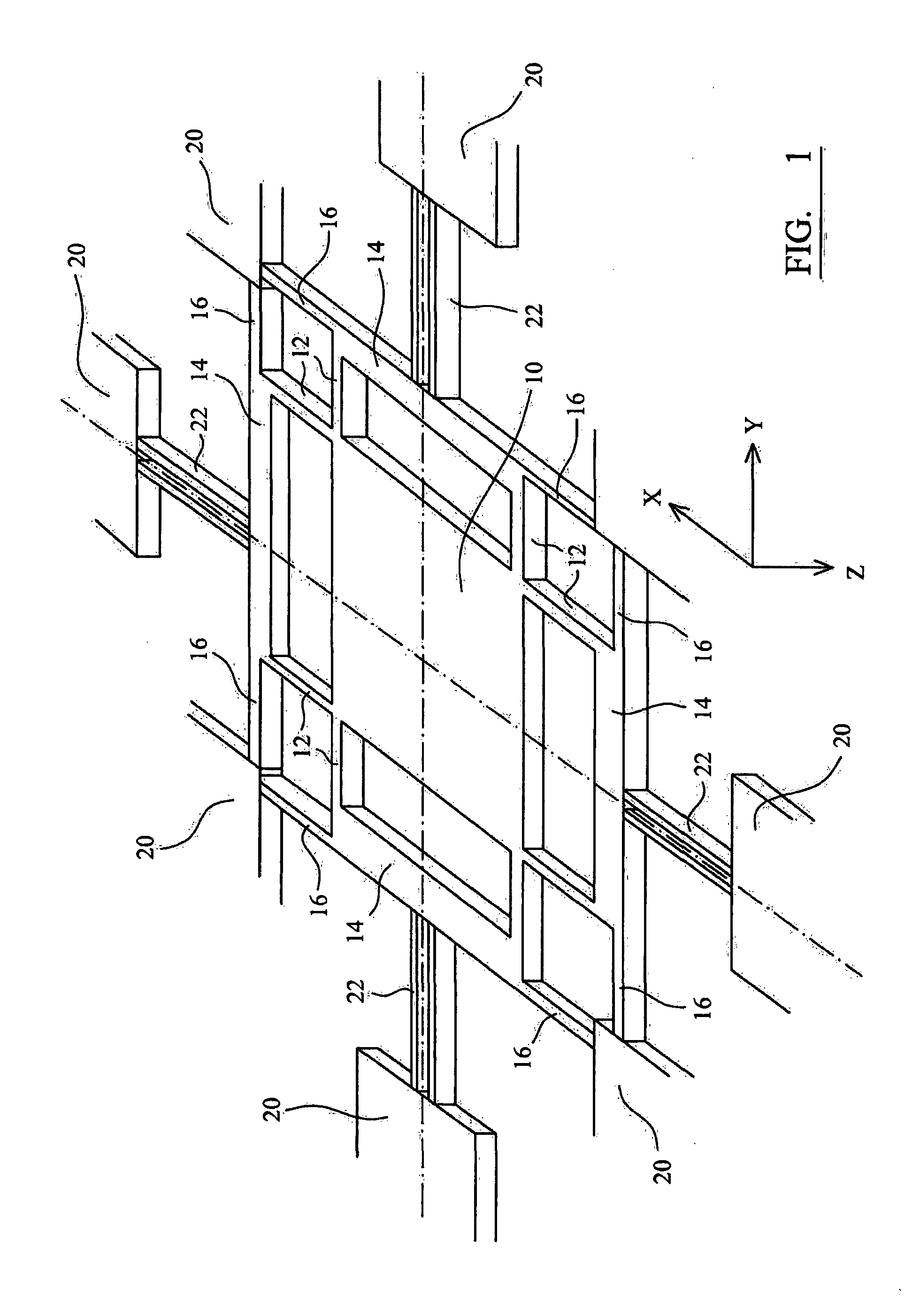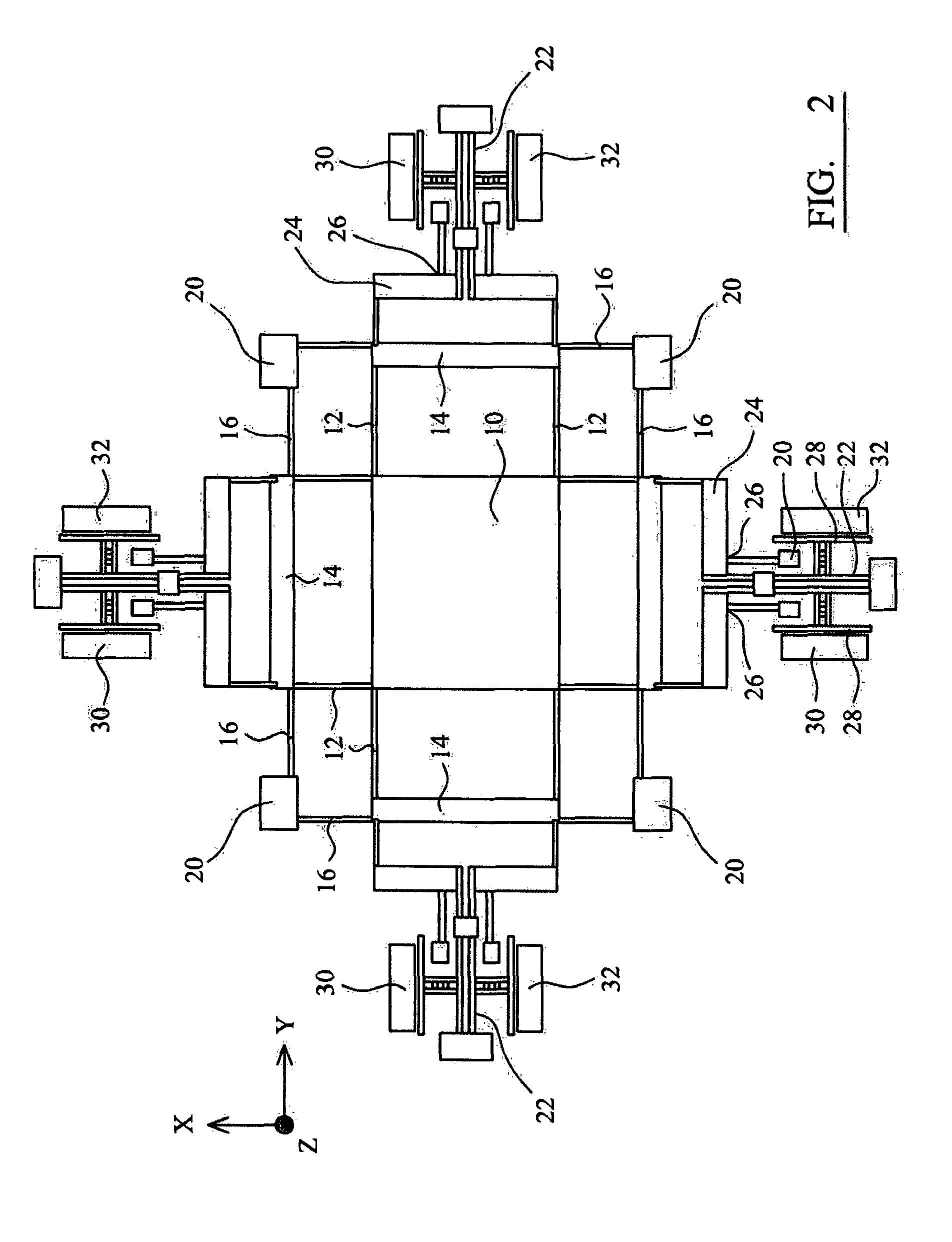Dual and Triple Axis Inertial Sensors and Methods of Inertial Sensing
a technology of inertial sensing and inertial sensors, applied in the direction of instruments, heat measurement, acceleration measurement in multiple dimensions, etc., can solve the problems of restricting the functionality and practical applicability of the device, correspondingly increasing the cost, size and power requirements of the device, etc., to achieve more accurate determination of acceleration, reduce cross-axis sensitivity, and simplify the processing of the outputs of the sensor
- Summary
- Abstract
- Description
- Claims
- Application Information
AI Technical Summary
Benefits of technology
Problems solved by technology
Method used
Image
Examples
Embodiment Construction
[0065]FIG. 1 is a schematic illustration of a dual axis inertial sensor in accordance with an embodiment of the invention. The sensor comprises a single suspended silicon proof mass held within a dual-axis stage. The dual-axis stage comprises four platforms 14 that are coupled to the proof mass 10 at each corner of the proof mass, by flexures 12. The platforms 14 are coupled to a surrounding frame 20 by flexures 16. The stage is designed in such a way that it allows for decoupled, but symmetric motion of the suspended proof mass in both the X and Y axes, with reduced mechanical cross-talk between the two axes. The stage is designed to restrict the motion of the platforms 14 to one degree of freedom, i.e. along the X or Y axis as shown, while allowing the proof mass suspended within the stage to displace with two degrees of freedom, i.e. along both X and Y axes. This allows decoupled outputs to be connected to the platforms 14 to transduce the acceleration of the proof mass in each o...
PUM
 Login to View More
Login to View More Abstract
Description
Claims
Application Information
 Login to View More
Login to View More - R&D
- Intellectual Property
- Life Sciences
- Materials
- Tech Scout
- Unparalleled Data Quality
- Higher Quality Content
- 60% Fewer Hallucinations
Browse by: Latest US Patents, China's latest patents, Technical Efficacy Thesaurus, Application Domain, Technology Topic, Popular Technical Reports.
© 2025 PatSnap. All rights reserved.Legal|Privacy policy|Modern Slavery Act Transparency Statement|Sitemap|About US| Contact US: help@patsnap.com



